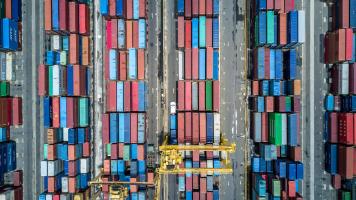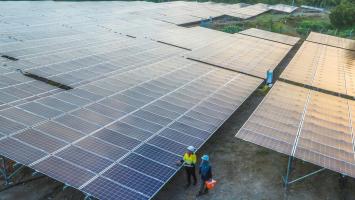
In Thailand, women accounted for 60% of all job losses, including 90% in manufacturing. Photo credit: ADB.
Young people aged 15 to 24 accounted for as much as 45% of job losses at the height of the pandemic in 2020. Women were also among the most affected.
The COVID-19 pandemic pummeled Southeast Asian economies, leading to major job losses across many sectors due to government lockdowns and movement restrictions in 2020, says a new report from the Asian Development Bank (ADB).
Job losses peaked in the second quarter of 2020 when government containment measures were at their most stringent, according to A Crisis Like No Other—COVID-19 and Labor Markets in Southeast Asia.
The report examines how COVID-19 has affected labor markets in five countries: Indonesia, Malaysia, Philippines, Thailand, and Viet Nam since the beginning of the pandemic. It aims to help policy makers identify priorities, constraints, and opportunities for developing and implementing effective labor market strategies during the economic recovery and beyond.
Last year, one out of five workers in the Philippines lost jobs or left the workforce altogether in the second quarter. About 90% of Vietnamese who lost their jobs stopped looking for new jobs, as did 60% of Indonesians and 40% of Malaysians.
Youth and women
The report also found that the youth and women are among the most affected by the ongoing crisis.
At the height of the pandemic in 2020, young people aged 15 to 24, who represent less than 15% of the workforce in Indonesia, the Philippines, Thailand, and Viet Nam, accounted for as much as 45% of job losses. In Thailand, women accounted for 60% of all job losses, including 90% in manufacturing. In the Philippines, nearly one out of four women lost their jobs in sales and service occupations.
Young workers were more likely to lose jobs mainly because they dominated hard-hit sectors such as hotels and restaurants, as well as wholesale and retail trade. Job losses among the youth along with other factors (i.e., high youth unemployment, disruptions to education and skills development, delays in school-to-work transitions) can have long-term impact on their career and earning prospects.
In all countries, and across virtually all age cohorts, women were more likely to exit the labor force following job loss or to take care of their family during the pandemic, the report also found. As countries start to recover in the third quarter of 2020, women reentering the labor market took largely lower “quality,” lower productivity jobs, which could hurt their career in the long term.
Other hard-hit groups
Low-skilled workers accounted for the largest share in job losses in the second quarter of 2020. These workers represented nearly half of job losses in Viet Nam, and 25%–30% in Indonesia, Malaysia, the Philippines, and Thailand.
Many worked in retail and wholesale trade, food and accommodation, transportation, and personal services, which were severely affected by containment and social distancing measures.
Middle-skilled workers in sales and service occupations, crafts and related construction trades, and in manufacturing (e.g., plant and machine operators and assemblers) were also affected. The report noted that the potential for remote work for these jobs was limited, which “added to the ways technology is driving inequality in the region’s labor market.”
Recommendations
“Despite unprecedented government responses, COVID-19 has exposed significant social protection gaps associated with high and persistent informality across the region,” said ADB Director General for Southeast Asia Ramesh Subramaniam in a news release. “It also has provided an opportunity for countries to address these gaps and expand coverage to new beneficiaries and excluded groups. As recovery takes hold, the focus of fiscal policy can shift more strongly from relief to stimulus, and from stimulus to structural investments that will promote sustained and inclusive growth.”
Countries need to leverage achievements and lessons learned and innovative approaches used to respond to the pandemic and channel the efforts to temporarily fill social protection gaps. The report cited digital technology and e-banking among the innovative approaches that could be further deployed.
Countries should also invest more in human capital, ensure wider access to education and skills development, and bridge the digital divide. Prioritizing such programs will not only reduce their vulnerability to shocks as emphasized by the pandemic but also mitigate widening inequalities in labor market outcomes and living standards across and within countries, the report said.
“The pandemic and the risk of slower economic growth and increased inequalities have underscored the need for fiscal policy to go beyond its countercyclical role through increased investments in social protection and its infrastructure,” added ADB Director of Human and Social Development for Southeast Asia Ayako Inagaki. “Countries should boost investments in human capital and mobilize domestic resources to build inclusive, sustainable social protection programs, and increase social insurance contributions.”
This article was first published by BIMP-EAGA on 14 January 2022.

BIMP-EAGA
The Brunei Darussalam–Indonesia–Malaysia–Philippines East ASEAN Growth Area, or BIMP-EAGA, is a cooperation initiative established in 1994 to spur development in remote and less developed areas in the four participating Southeast Asian countries.


